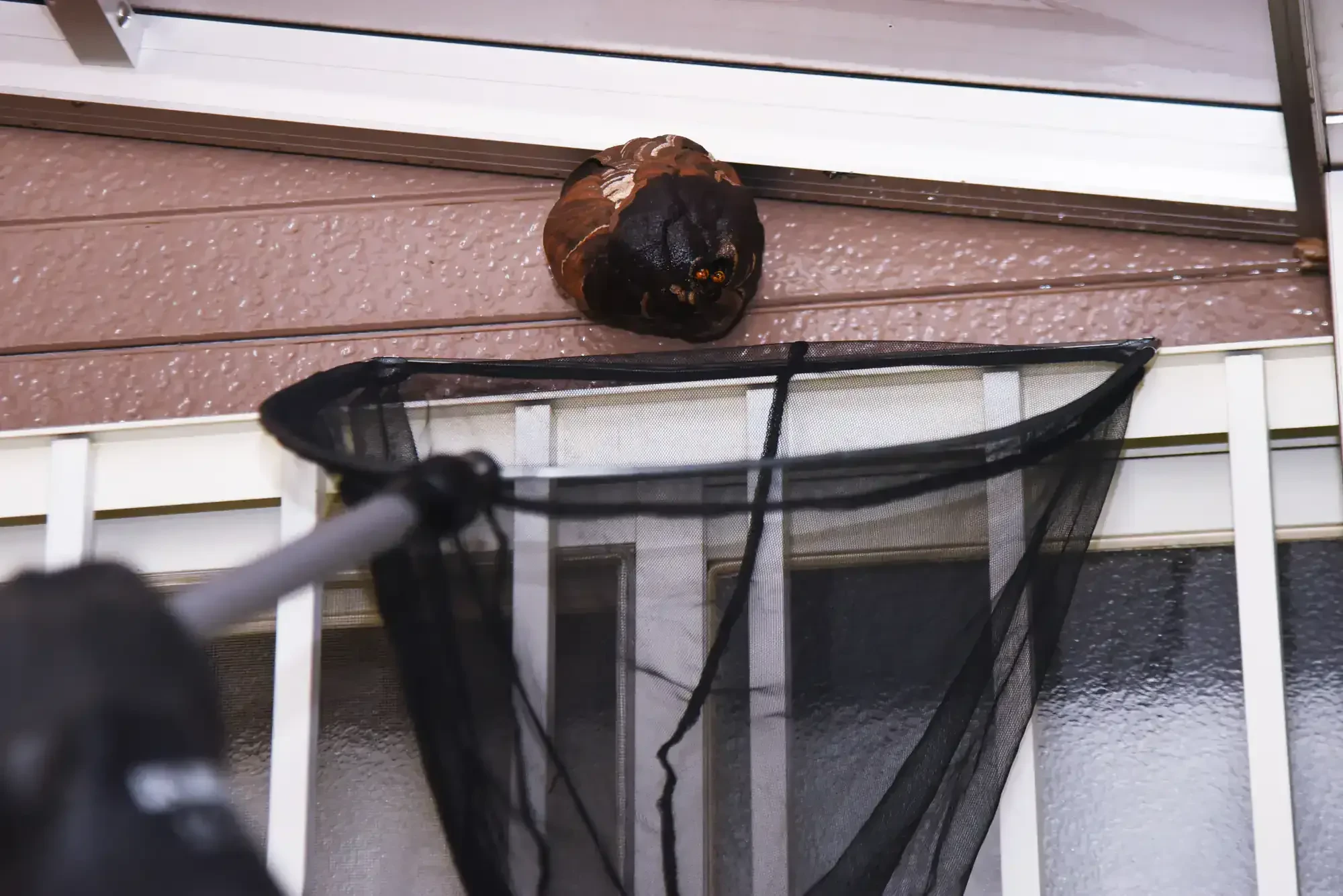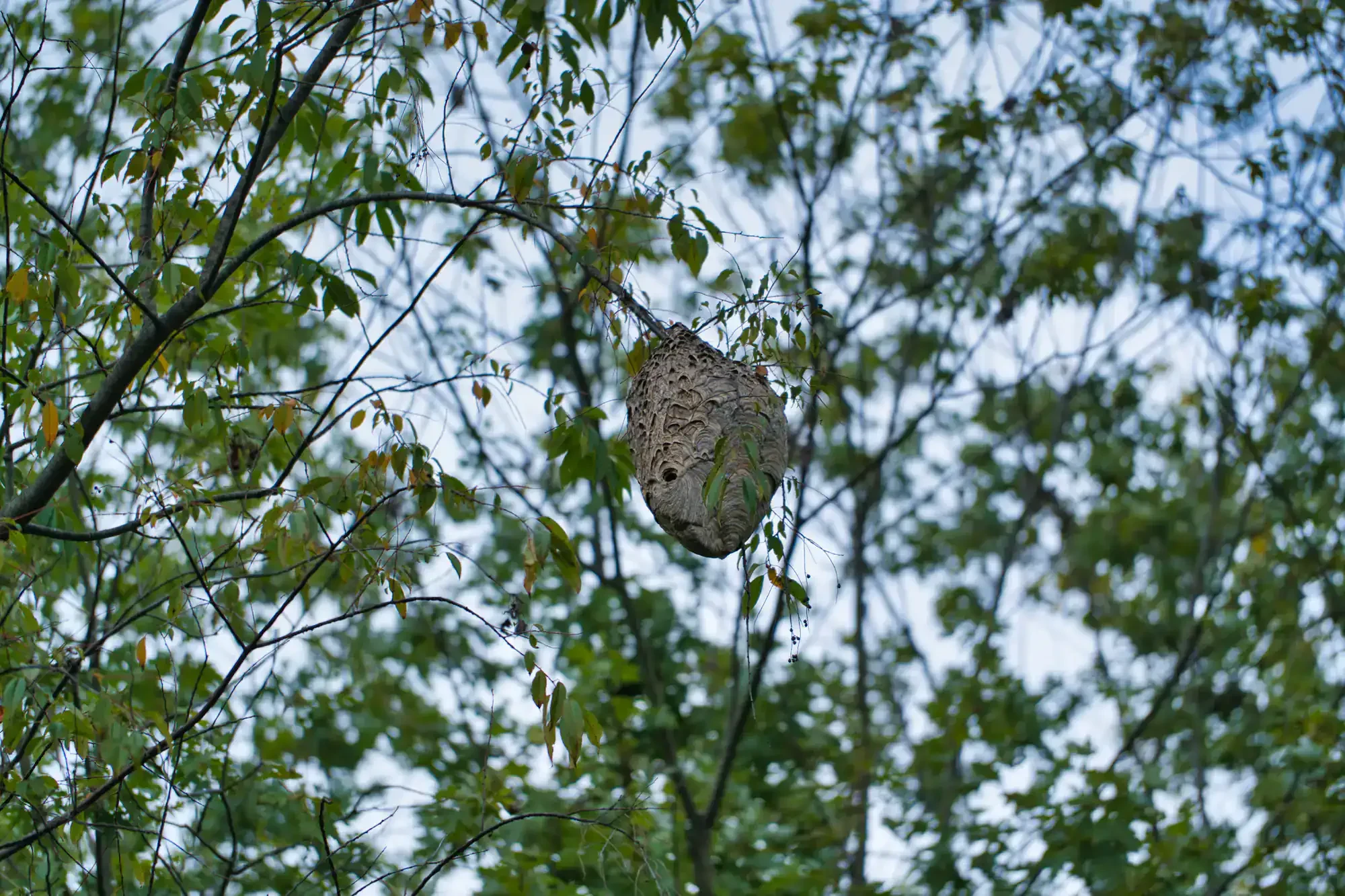
Hear from Our Customers

Picture stepping onto your deck without immediately scanning for yellow jackets. Your kids playing in the yard without you holding your breath every time they run near the garden. Evening barbecues where guests actually stay outside instead of hovering by the door.
That’s what happens when yellow jacket nests get eliminated properly. You get your outdoor space back during the months when Michigan weather is perfect for using it. No more rushing inside when you hear that aggressive buzzing sound.
Professional removal means the colony is gone—not just temporarily disrupted. We eliminate the nest, treat areas where they commonly establish new colonies, and seal entry points so they don’t become an indoor problem.
We’ve been protecting Holly families from aggressive stinging insects since 2005. Roger leads our team with 26 years of hands-on experience dealing with Michigan’s peak yellow jacket season.
We’re the family-owned company that keeps the same technician coming to your property year after year. No part-time college students learning on your dime. Just certified professionals who understand how yellow jackets behave in Holly’s specific environment.
Holly’s wooded areas and proximity to recreational lakes create ideal yellow jacket breeding conditions. We’ve spent two decades learning how local terrain, seasonal weather patterns, and neighborhood factors affect yellow jacket populations in this area.

We start with thorough nest location—the critical step that determines everything else. Yellow jackets build in wall voids, ground nests, and structural entry points. Missing even one nest means the problem continues.
Next comes targeted elimination using professional-grade treatments that reach the entire colony, including the queen. We don’t just spray the opening and hope for the best. The treatment penetrates deep enough to eliminate all activity.
Finally, we properly seal entry points and treat areas where yellow jackets commonly establish new colonies. This prevents them from chewing through drywall to find new exit routes, which is what happens when people try to seal openings without eliminating the colony first. We also provide follow-up monitoring because one missed nest can quickly become a serious problem for Holly families.

Ready to get started?
During August and September, yellow jackets become particularly hostile while guarding their nests. These colonies can host up to 5,000 members by late summer—significantly larger than paper wasp colonies. This timing coincides with when Holly families want to spend the most time outdoors.
What makes late summer worse is their behavior change. Yellow jackets switch from hunting insects to seeking out sugary foods like soda, ice cream, and sweet beverages. They become more aggressive around outdoor gatherings, picnic tables, and anywhere food is present.
Unlike honeybees, which sting once and die, a single yellow jacket can sting many times. They also inject more venom per sting and will actually chase after you if you disturb their nest. For people with allergies, this creates a serious medical emergency situation.
In Holly’s climate, colonies start small in spring but reach peak size and aggression by late summer when they become most problematic for homeowners. Professional removal during this critical period prevents the situation from getting worse as fall approaches.

Never seal yellow jacket entry points without professional elimination first. When you block their normal exit, yellow jackets will chew through drywall and other materials to find new ways out. This often means they end up inside your home instead of outside.
We’ve seen cases where homeowners sealed an opening on their house exterior, only to have hundreds of yellow jackets emerge through interior walls days later. Sometimes they actually eat through an interior wall and enter living spaces, creating a dangerous situation for the entire family.
We eliminate the colony first, then properly seal entry points to prevent future infestations. This approach protects your home’s structure and keeps yellow jackets from becoming an indoor problem.
Yellow jacket nests in Holly can house up to 5,000 members by late summer. What starts as a golf ball-sized nest in spring expands to massive colonies by August and September. These are significantly larger than paper wasp colonies.
The size makes professional removal essential because disturbing a large colony triggers defensive behavior from thousands of insects capable of multiple stings each. DIY attempts on mature nests often result in serious injury.
In Michigan’s climate, colonies start small in spring but reach peak size by late summer when they become most problematic for homeowners. The timing coincides with when families want to enjoy their outdoor spaces most, making professional intervention critical during this peak period.
Late summer yellow jackets become more aggressive for biological reasons specific to their lifecycle. By August and September, the nest is at its largest size with stressed workers because food sources are running low, yet the colony must support a population of new queens that will overwinter.
Yellow jackets also switch from hunting insects to scavenging for sweet foods during this period. They become more attracted to garbage, picnic tables, and outdoor grills, bringing them into direct conflict with Holly families trying to enjoy outdoor activities.
This behavioral change, combined with peak colony size, makes late summer the most dangerous time for encounters. Unlike paper wasps that are relatively non-disruptive, yellow jackets range further from their nests and defend themselves much more aggressively during this critical period.
Yellow jacket colonies remain active for only one summer. The queens fly away to start new colonies, and the remaining wasps die at the end of the season. The nest itself is not reused, with occasional exceptions for German yellow jackets.
However, the same areas that attracted yellow jackets once will likely attract them again. They build nests closer to the ground in sheltered, dark nooks and crannies. Properties with ideal nesting conditions often see new colonies establish in similar locations year after year.
Our professional treatment includes identifying and addressing these attractive nesting sites to reduce the likelihood of future infestations. We also provide guidance on property modifications that make your Holly home less appealing to new queens looking for nesting sites each spring.
Buzzing sounds inside your walls or ceilings are telltale signs of yellow jackets nesting in wall voids. You might also notice increased wasp activity around specific areas of your home’s exterior, particularly near small gaps in siding or between structural elements.
Indoor sightings of yellow jackets usually mean the nest is inside your home’s structure. Left untreated, they may chew their way into your living space, increasing the risk of stings and allergic reactions. These cases almost always require professional intervention.
Delayed treatment can lead to significant wall damage or insects breaking through into your home. We’ve seen situations where homeowners ignored wall buzzing only to have yellow jackets emerge through interior drywall weeks later, creating dangerous situations for the entire household.
Yellow jackets are actually a specific type of wasp, but their behavior differs significantly from paper wasps. Paper wasps are relatively non-disruptive, building small umbrella-shaped nests on high structures and focusing on hunting insects. If you leave paper wasps alone, they’ll probably leave you alone.
Yellow jackets are far more disruptive and aggressive. They build larger colonies closer to the ground in sheltered areas like wall voids, underground burrows, and structural crevices. They range further from their nests and defend themselves much more aggressively than paper wasps.
Yellow jackets are also more attracted to human food sources, especially sugary substances and meat. You’ll see them gathering around garbage cans, picnic tables, and outdoor eating areas. Their colonies are simply larger than paper wasp colonies, and if you see a lot of wasps around your Holly home, they’re probably yellow jackets requiring professional removal.